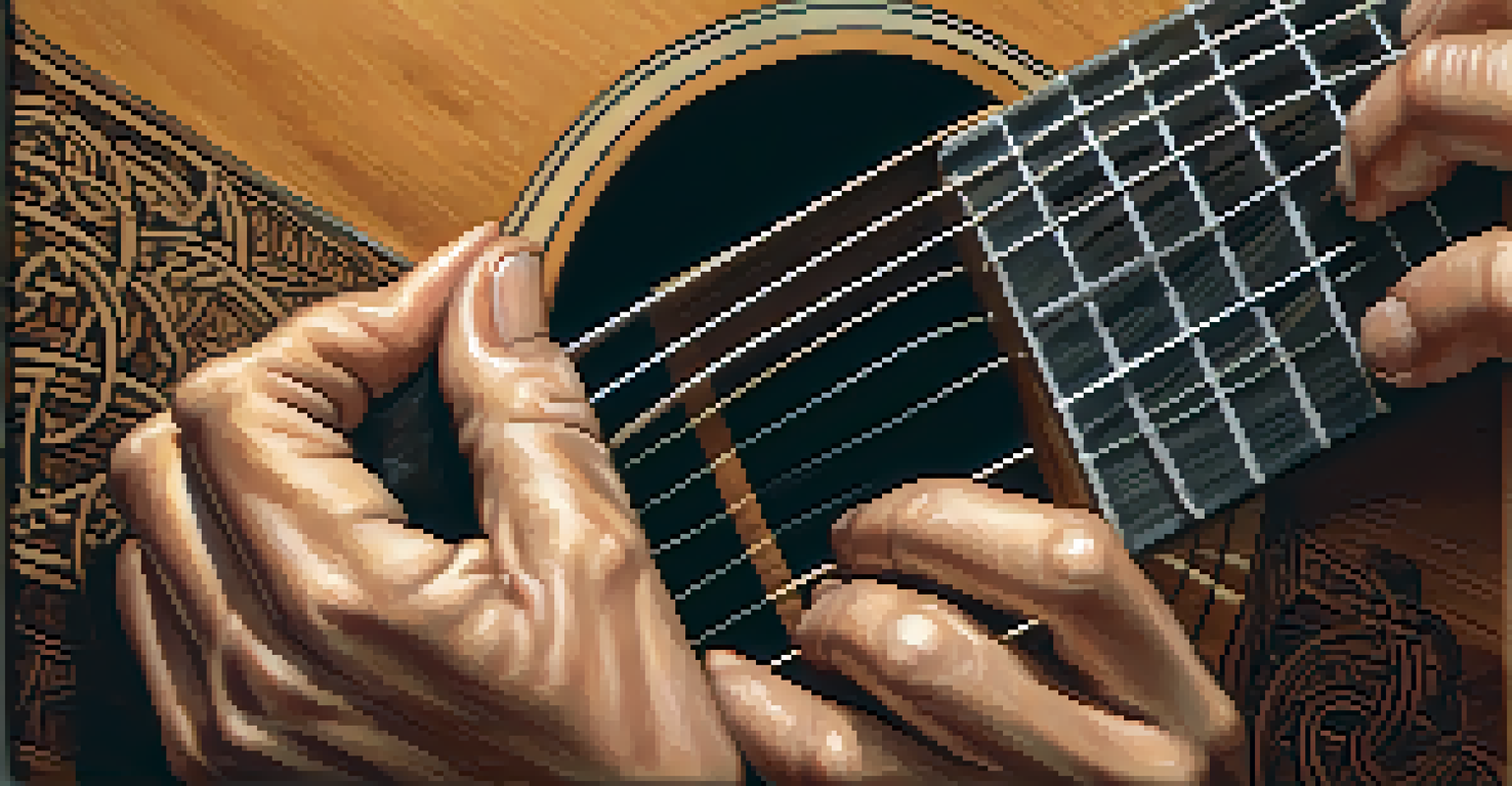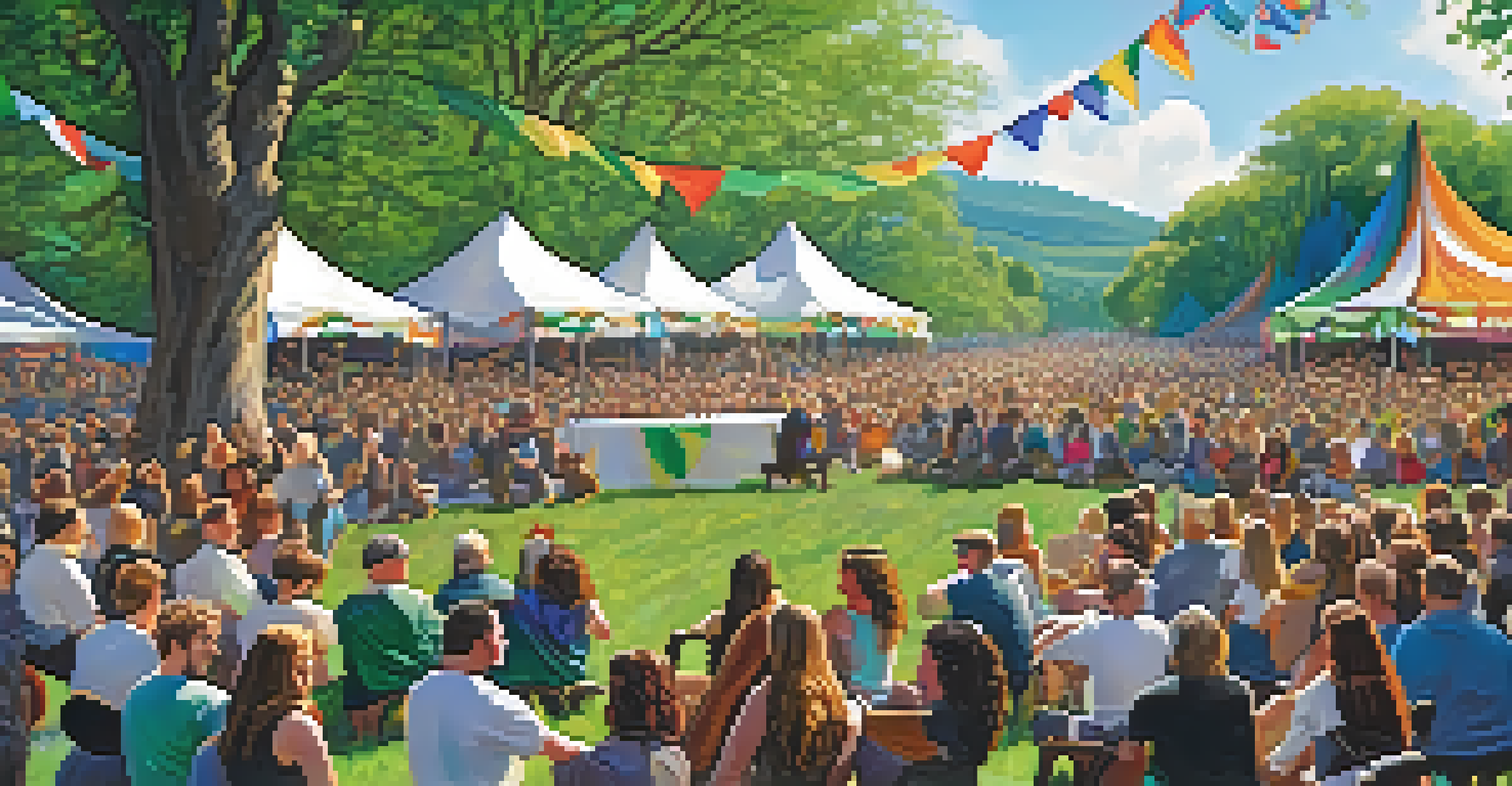Celtic Music and Its Unique Fingerstyle Guitar Techniques

What is Celtic Music and Its Rich Heritage?
Celtic music is a vibrant genre rooted in the folk traditions of Celtic nations such as Ireland, Scotland, Wales, and Brittany. It encompasses a variety of styles, rhythms, and instruments, creating a unique sound that is both joyful and haunting. This music often tells stories of everyday life, love, and mythology, connecting people to their history and culture in a profound way.
Celtic music is the folk music of the Celts, an ancient people whose culture and traditions still resonate in the modern world.
The melodies of Celtic music are often characterized by their use of modes, which give them a distinctive sound that feels both ancient and fresh. Instruments like the fiddle, flute, and harp are commonly featured, but the guitar has carved out a significant place in this tradition. With its ability to blend rhythm and melody, the guitar enhances the depth of Celtic music while allowing for individual expression.
Understanding the cultural context of Celtic music is essential for appreciating its intricacies. It has evolved over centuries, influenced by various social and historical events. Today, it thrives in both traditional settings and modern interpretations, proving its timeless appeal and ability to resonate with listeners across generations.
The Role of Fingerstyle Guitar in Celtic Music
Fingerstyle guitar is a technique where the player plucks the strings directly with their fingers instead of using a pick. This method allows guitarists to achieve a fuller sound, making it a perfect fit for the melodic and rhythmic complexities found in Celtic music. The ability to play both melody and accompaniment simultaneously gives the music a rich texture that captivates audiences.

In Celtic music, fingerstyle techniques often involve intricate patterns that mimic traditional instruments, enhancing the overall sound. Players might use alternating bass notes while playing a melody on the higher strings, creating a layered effect that feels both lively and dynamic. This approach not only showcases the guitarist's skill but also honors the roots of the genre.
Celtic Music's Rich Heritage
Celtic music is a vibrant genre that reflects the folk traditions of Celtic nations, telling stories of life and mythology.
Moreover, fingerstyle guitar lends itself to improvisation, which is a key element of Celtic musical tradition. Musicians often adapt tunes on the fly, adding their personal touch and flair. This spontaneity keeps the music fresh and engaging, allowing for a unique experience with every performance.
Essential Fingerstyle Techniques for Celtic Guitar
To master fingerstyle guitar in the context of Celtic music, certain techniques are essential. One of the foundational skills is the use of arpeggios, where the guitarist plays the notes of a chord in succession rather than simultaneously. This creates a flowing sound that is reminiscent of traditional harp music, which is a staple in Celtic compositions.
The guitar is a powerful instrument that can convey deep emotions, especially when played in the rich traditions of Celtic music.
Another important technique is the use of hammer-ons and pull-offs, which add embellishments to melodies. These techniques allow for smoother transitions between notes, giving the music a more fluid and expressive quality. Incorporating these elements can elevate a player's performance, making it more engaging for listeners.
Lastly, practicing dynamics—playing louder or softer at appropriate moments—can bring a piece to life. This is particularly effective in Celtic music, where the emotional weight of a song can be heightened through subtle changes in volume and intensity. By mastering these fingerstyle techniques, guitarists can truly embody the spirit of Celtic music.
Famous Celtic Guitarists and Their Influence
Several renowned guitarists have made significant contributions to the world of Celtic music, each bringing their unique style and interpretations. One notable figure is Andy Irvine, whose fingerstyle playing incorporates traditional Irish melodies with a modern twist. His ability to blend various influences has inspired many aspiring musicians to explore the genre.
Another influential guitarist is Martin Simpson, known for his exceptional fingerpicking skills and deep understanding of folk traditions. His work showcases the versatility of the guitar in Celtic music, proving that it can stand alongside traditional instruments while still retaining its own voice. Simpson's recordings often highlight the intricate interplay of melody and harmony that defines Celtic music.
Fingerstyle Guitar's Unique Role
Fingerstyle guitar enhances Celtic music by allowing musicians to play intricate melodies and rich harmonies simultaneously.
These artists, among others, have paved the way for a new generation of guitarists, encouraging them to explore and innovate within the genre. Their influence extends beyond technique; they have also fostered a sense of community and shared passion for Celtic music, inspiring countless musicians to carry the torch forward.
Learning to Play Celtic Fingerstyle Guitar
For those interested in diving into Celtic fingerstyle guitar, starting with simple tunes is key. Traditional songs like 'Danny Boy' or 'The Foggy Dew' provide excellent material for beginners. These pieces typically feature straightforward melodies, allowing new players to focus on developing their fingerstyle techniques without feeling overwhelmed.
Online resources, such as video tutorials and tablature, can be incredibly helpful for learning. Many experienced players share their insights and techniques, making it easier to grasp the nuances of fingerstyle playing. Engaging with online communities can also provide support and encouragement as you progress on your musical journey.
Additionally, regular practice is essential for mastering fingerstyle techniques. Setting aside time each day to work on finger coordination, timing, and dynamics will lead to steady improvement. Remember, every guitarist was once a beginner, and with patience and dedication, anyone can learn to express themselves through Celtic music.
The Emotional Power of Celtic Fingerstyle Guitar
One of the most captivating aspects of Celtic fingerstyle guitar is its ability to evoke deep emotions. The intertwining melodies often tell stories of love, loss, and longing, resonating with listeners on a personal level. When played with care and intention, the guitar becomes a vehicle for expressing complex feelings that words alone may not convey.
This emotional depth is further enhanced by the use of dynamics and phrasing. A soft, gentle passage may evoke nostalgia, while a vibrant, lively section can inspire joy and celebration. The guitarist's interpretation plays a significant role in shaping the listener's experience, allowing for a unique connection to each performance.
Future of Celtic Music
The future of Celtic music is bright as new generations blend traditional sounds with modern influences, ensuring its continued evolution.
As audiences engage with the music, they often find themselves transported to another time and place, experiencing the rich tapestry of emotions woven into each note. This powerful connection between the guitarist and the listener is what makes Celtic fingerstyle guitar so enchanting and memorable.
The Future of Celtic Music and Fingerstyle Guitar
As we look to the future, Celtic music continues to evolve while maintaining its roots. New generations of musicians are experimenting with blending traditional sounds with modern influences, creating innovative styles that push the boundaries of the genre. This fusion not only keeps the music fresh but also attracts a wider audience who may not have previously engaged with Celtic traditions.
Fingerstyle guitar, in particular, is seeing a resurgence as more players explore its potential within Celtic music. Workshops, online courses, and social media platforms are making it easier for aspiring musicians to connect and share their love for this art form. The sense of community fostered by these platforms encourages collaboration and experimentation, further enriching the Celtic music landscape.

Ultimately, the future of Celtic music and fingerstyle guitar looks bright. As long as there are passionate musicians willing to share their stories and connect with others, this enchanting genre will continue to thrive, captivating audiences for generations to come.